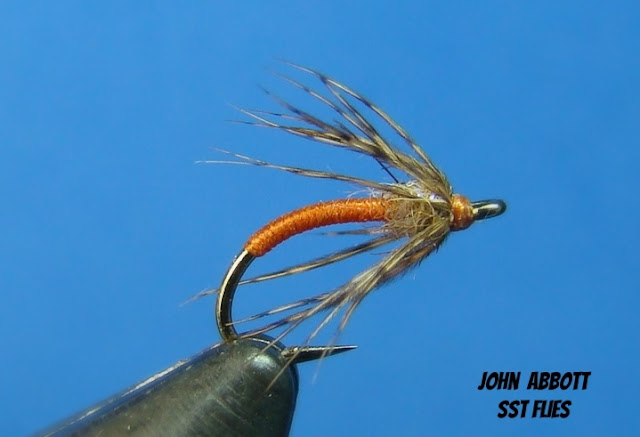I am not going to spend time delving into the history or the numerous soft hackle patterns, but I feel it is important to add these highly effective patterns are still called "hackle flies" or "spiders" by many. Rightfully so. The use of the word "soft hackle" didn't take hold until Slyvester Nemes' wonderful book The Soft-Hackled Fly (1975) hit the streets that the terminology stuck.
Let's chat about the more common soft hackles... Traditionally, these flies are on wet fly hook in sizes 8-14. However, I love the emerger-ish look of the Daiich 1150 and in smaller sizes (16-20) these patterns can be absolutely deadly! The problem the tier encounters is the likelihood of finding a partridge or grouse hackle small enough to wrap around the hook shank- almost nil. So the tier needs to get a little creative. How's it done?
Materials:
Materials:
Hook: Choice, size 16-20, Daiichi 1150 pictured.
Thread: 8/0 or 10/0 in color of choice
Thorax: Hare's ear (I've mixed in a little pearl UV Ice Dub)
Hackle: Hungarian partridge
Step 1:
Pinch barb with vise. Secure hook.
Step 2:
Start thread approximate two lengths behind the eye. Wind thread down the bend stopping in the position pictured and return to the starting point.
Step 3:
Choose a Hungarian partridge feather with fibers roughly 1 1/2 times the hook length. Bunch 15 to 20 fibers and align tips. Once the tips are aligned, pinch them between your thumb and index finger then cut fibers (do not pull) close to the stem.
Visually measure the fibers from the end of the hook to the two eye lengths pass the eye. Pinch this location on the fibers. This becomes your tie in location on the fibers. Place fibers on top of bare shank just forward of the thread/body and make two or three soft wraps.
At this point you can either maneuver the fibers around the hook shank with your fingers, roll them by slowly tightening the thread in forward wraps, or a combination of both. (To save time at the desk I prefer to roll the fibers. With a little practice this technique becomes rather easy) The fibers should have 360-degree coverage around the hook shank. Leave a little room behind the eye for the head of the fly (pictured). Return thread to the thorax area and remove fiber ends.
Step 4:
Dub a small amount of hare's ear.
Wrap thorax leaving room for the head.
Step 5:
Pull fibers back over the hook and take one turn of thread. Check for 360-degree coverage of the shank. The fibers can still maneuvered in to place- within reason. If satisfied, apply head cement to the first inch of thread and whip finish.
Enjoy!









No comments:
Post a Comment